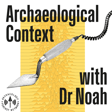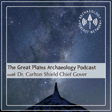
Scythians in the Steppe P1 - Examining the statements from Herodotus – With Dr Gino Caspari (S01E02)
For Episode 2 we come to a topic, which fascinates me since many years: The mysterious Scythians who lived in the Eurasian steppe, some 2500 years ago. I’ll begin with a quick overview of these people from the antiquity and thanks to the preserved writings of the Greek author Herodotus, we have the unique opportunity to learn about them almost from first hand. I then compare Herodotus statements about the burial habits of the Scythians with actual archaeological evidence from excavated grave monuments in order to test the validity of the antique author. After this overview and comparison, I will talk with Dr. Gino Caspari about his experience’s excavating grave sites in the Eurasian steppe and the Scythians in general.
Reverences:
- Simpson/Pankova Eds. (2017), Scythians. Warriors of ancient Siberia
- Parzinger (2004), Die Skythen
- Rolle et al. (1991), Gold der Steppe
- Rolle (1980), Die Welt der Skythen
- Rolle (1972), Neue Ausgrabungen skythischer und sakischer Grabanlagen in der Ukraine und in Kazachstan
- Herodotus HIV
Links: https://linktr.ee/23_minutes_archaeology
Support: patreon.com/23minarch





